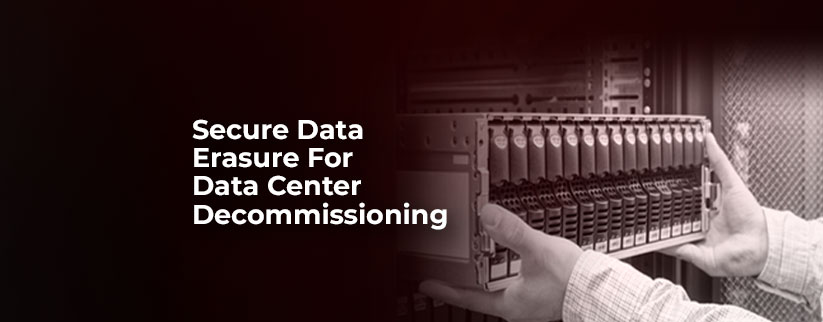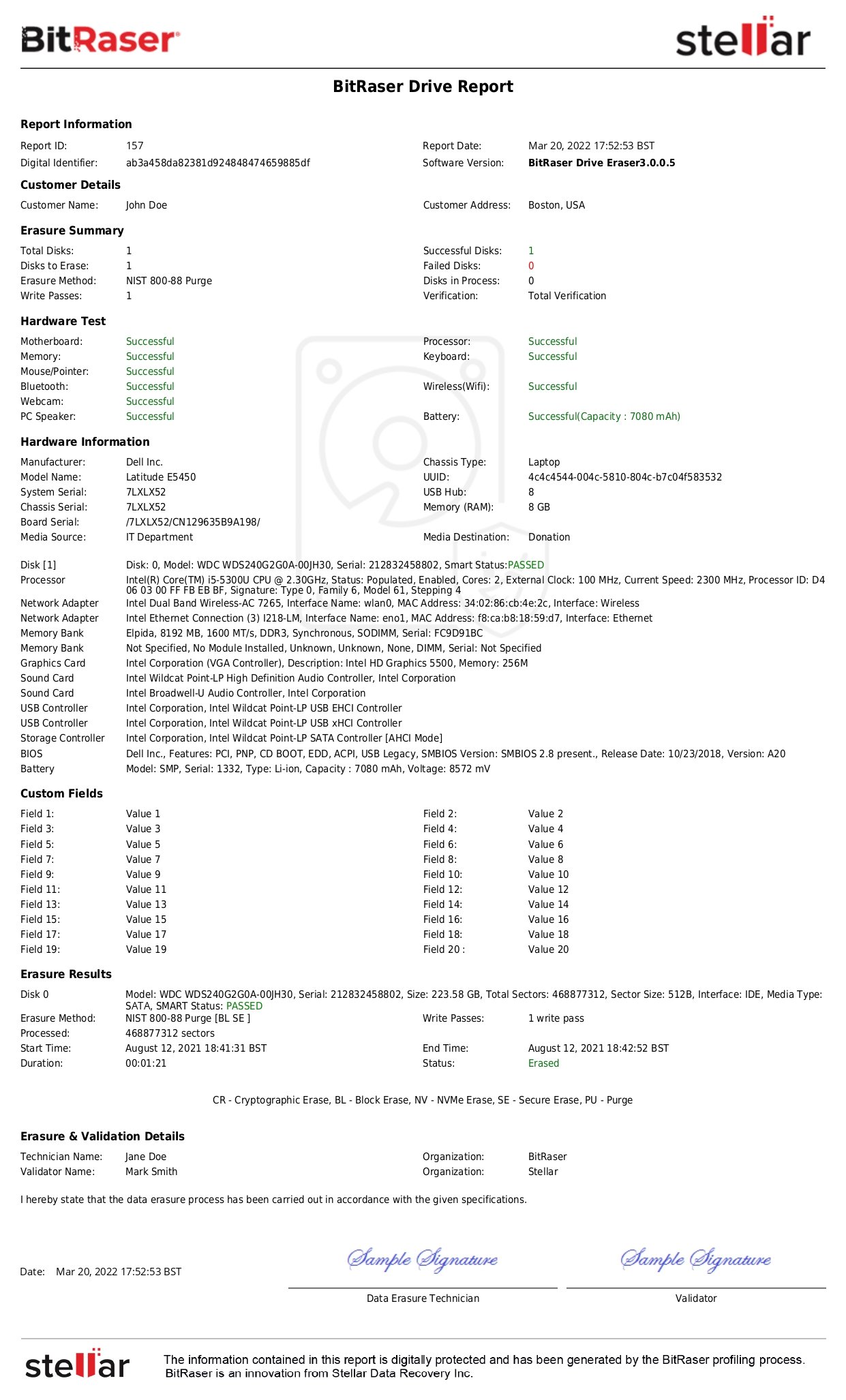Summary: Secure data disposal is a critical step during data center decommissioning, upgradation or cloud migration. Data centers store vast amount of sensitive and regulated information across storage arrays and servers. When there is a hardware refresh or servers are upgraded/discarded; data erasure helps organizations mitigate risks and avoid compliance violations. This article explains the process of data center decommissioning and highlights the critical role of secure data wiping in ensuring compliance with data protection laws. It explores how data erasure help prevent data breaches, featuring the high-profile Morgan Stanley case as a key example.

Data Center Decommisioning is the structured process of systematically retiring and dismantling a data center facility or a part of it. This includes securely removing IT assets like networking hardware, storage, servers, routers, or other supporting infrastructure. Decommissioning a data center is as complex as installing a new one; given the sensitive nature of the data that is stored in data centers. The dismantling or the upgrading process requires meticulous planning, careful execution and, most importantly, permanent data erasure before IT assets are disposed of or repurposed.
Importance of Data Center Decomissioning
As organizations rapidly migrate to cloud, modernize infrastruture or at times downsize operations, legacy storage environments must be retired in a secure and compliant manner. Improper decommissioning of servers can lead to data leakage, potential misuse of sensitive information, non-compliance with data protection laws, financial penalties, loss of customer trust and reputation. From a financial standpoint decommissioning helps reduce high cost of maintaining outdated equipment. It further ensures that outdated servers and storage devices don’t become a liability by enabling responsible asset retirement and enforcing secure data erasure practices. Morgan Stanley data breach is a classic example of how ignoring due diligence in data center decommissioning can lead to a data breach and subsequent penalties worth millions of dollars. Also, outdated systems and equipment do not come with the latest features and security updates. Thus, IT assets at the end-of-life possessing sensitive data can be breached if proper care is not taken to dispose of them.
Data security lies at the heart of the decommissioning process. Equally important is environmental responsibility. Data center components contain hazardous materials like lead and mercury, which may cause environmental harm. Partnering with a certified e-waste recycler ensures responsible decommissioning in an eco-friendly and compliant manner.
Let's breakdown the data center decommissioning checklist to ensure secure, compliant and efficient process.
Data Center Decommissioning Checklist
- Pre Decomissioning Planning
- Define scope of work, objectives and timeline.
- Document a list of devices to be dismantled; servers, drives, cables, and other data center equipment.
- Identify and asset tag devices that need to be recycled, or re-used.
- Assign internal roles and responcibilities.
- Assess regulatory compliance obligations (like EU-GDPR, HIPAA).
- Assess need of appointing certified ITAD companies, and data erasure tools to be used.
- List down vendors that you may need to support the process of dismantling.
- Cancel all maintenance contracts for servers, if any.
- Take Data Backups before Migration
- Backup all critical data from storage systems and servers.
- Make sure power backup is in place.
- Validate successful data migration to new infrastructure or cloud.
- Locate and keep all software licenses for servers handy.
- Data Center Wiping / Data Destruction
- Perform data wiping as per the shortlisted erasure tool like BitRaser.
- Perform NIST 800-88 or US DoD 5220.22 compliant data erasure.
- Maintain proof of data destruction.
- Physically destroy drives that cannot be wiped due to bad sectors (failed drives).
- Dismantling, Asset Removal & Documentation
- De-rack hardware and track serial numbers of the drives/devices against inventory.
- Label equipment for resale, destruction and for transportation.
- Maintain a secure chain of custody for outgoing material.
- Store Certificates of Erasure securely.
- Ensure appointed ITAD vendor uses GPS tracked transport.
- Align decommissioning output with organizational sustainability goals.
Automated Data Erasure for Data Centers
In large-scale data center environments, manual data wiping is cumbersome and not advisable. Manual methods are prone to inconsistencies, human errors, and device oversight; some of the common causes of post-decommissioning data breaches. Automated data erasure using BitRaser Data Erasure software enables ITADs wipe several thousand drives simultaneously with minimal human intervention and maximum throughput. BitRaser erases data permanently using NIST 800-88 guidelines and supports wiping of more than 65,000 drives over a network via PXE boot. IT managers can customize the application to perform standardized wiping across locations. BitRaser API is available to fetch data erasure records in a centralized ERP system. Software generates ESG reports for measuring the CO2e saved.
BitRaser data center wiping software can be helpful in more than one way.
- Facilitates On-site Data Destruction
BitRaser enables secure on-site data destruction during data center decommissioning. It wipes data from drives and servers at your facility. Organizations can perform data wiping in-house or through a certified ITAD vendor. On-site data wiping keeps devices away from changing too many hands. It also allows the IT team to monitor and verify the data destruction process.
- Ensures Efficiency & Security
BitRaser, software based erasure ensures complete and irreversible wiping of sensitive data, even beyond recovery in lab settings. It enables secure sanitization across all data center assets hard drives, SSDs, servers, VMs, and SANs. The software allows wiping of multiple drives and devices simultaneously bringing efficiency in erasure operations. What's more! the software has an integrated diagnostics feature that allows ITADs to test and diagnose hardware components while erasure is performed.
- Helps in Meeting Compliance
Organizations are obligated by laws like EU-GDPR, CCPA, SOX, HIPAA, etc. to include data destruction as a part of their IT Asset management policy. Modern data protection laws demand secure data destruction that leaves no traces behind. The use of a certified and professional data erasure tool like BitRaser is recommended as it helps in ensuring compliance with global data protection legislation by destroying information securely and generating auditable reports. In case the third-party vendor is involved in decommissioning, organizations should demand the use of certified and reliable data sanitization tools.
- Offers Documented Evidence of Wiping (Audit Trails)
BitRaser provides a certificate of destruction for every instance of wiping. It acts as an audit trail for the complete data erasure process. The Certificate helps an organization prove that it has securely destroyed the data. It also promotes trust towards the third-party vendor performing media sanitization during data center decommissioning on behalf of your organization.
- Encourages Responsible Recycling
Data erasure or overwriting is an eco-friendly approach toward media sanitization as it ensures that the storage device is available to be reused, repurposed, or recycled. A professional wiping tool thus is a sustainable approach toward decommissioning IT assets in a data center as it reduces e-waste. Unlike physical destruction for device disposal, data sanitization is an eco-friendly approach to erasing every trace of information from the device and allows further reuse and recycling of the device.
Data Erasure: An Integral Part of Data Center Decommissioning
Data erasure forms an integral part of data center decommissioning services as it deals with the most important element of a data center i.e. its sensitive data. The absence of the right data destruction policy and any ignorance in ensuring due diligence in the disposal of sensitive information may lead to data leakage and breach. This can not only cost huge penalties and loss of reputation to the organization but also hampers business-critical work and loss of customer trust. It is thus pivotal for every organization to ensure that it either deploys a professional and certified data erasure tool or hires a third-party vendor that uses certified software and generates a certificate for every wiping executed.










